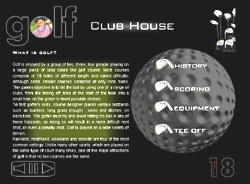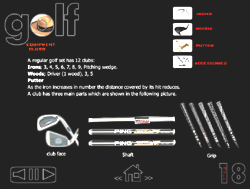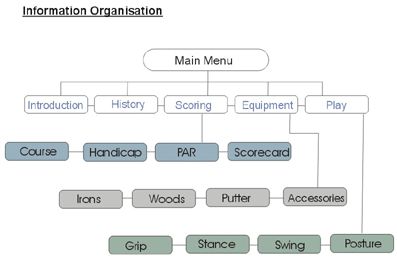|
Instructional
Design
Education happens through experience
or we can say learning happens through experience. For an instructional
designer creating an environment, which enriches this experience,
is the job on hand. This environment can be created by information
organisation and structuring. Earlier this could be experienced
through print media but with the emergence of New Media the experience
of learning can be enriched and made more realistic, interactive,
interesting and comprehensive.
The Project
The pedagogical approach followed by me to prepare the Golf Tutorial
changes from Behaviouristic to Cognitivistic. 
In a Behaviouristic approach the information is delivered and the
response of the learner is assessed based on how much they have
been able to grasp by testing them. It is based on repeating what
has been delivered to assure strengthening. Direct instruction is
one of the behaviouristic approaches in which linear and branch
tutorials are prepared. In branch tutorials the pattern of delivery
of information is changed according to the understanding level of
the learner.
The behaviouristic approach changes to Cognitivistic approach in
the tutorial. In cognitive apprenticeship model the experts stress
on the way the information is organised in the mind of learner.
There is no set pattern. The learner observes and then performs
it in his own way. The idea is to deliver information, which can
be interpreted by the learner in his own way yet not forgetting
the theme of the subject. This kind of model is effective where
the user or the learner has a certain motivation level and participates
with interest.
Process
1. Brief: Specification (Requirement Analysis).
2. Research, Data Collection, Consultation from Domain Experts
3. Planning
· Duration
· Resources: Humanware/ Hardware/ Software tools·
Design: Form/ Function/ Content
4. Asset Creation: textual, graphics, audio, visual, video
clippings
5. Authoring: Integration of all the material
6. Testing: Selective users, technical problems, navigation,
usability analysis.
7. Feedback



|



